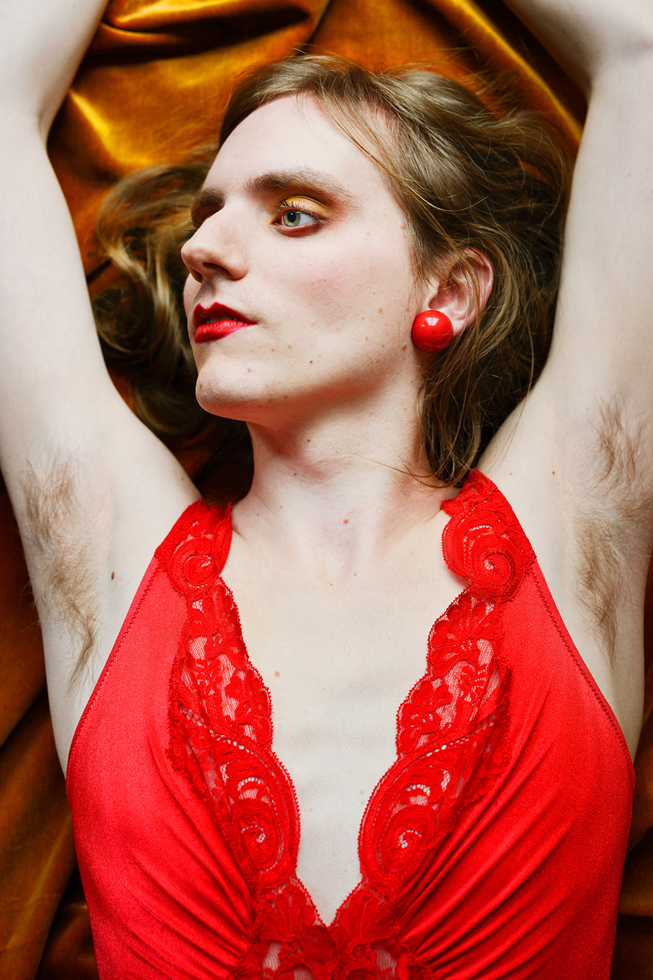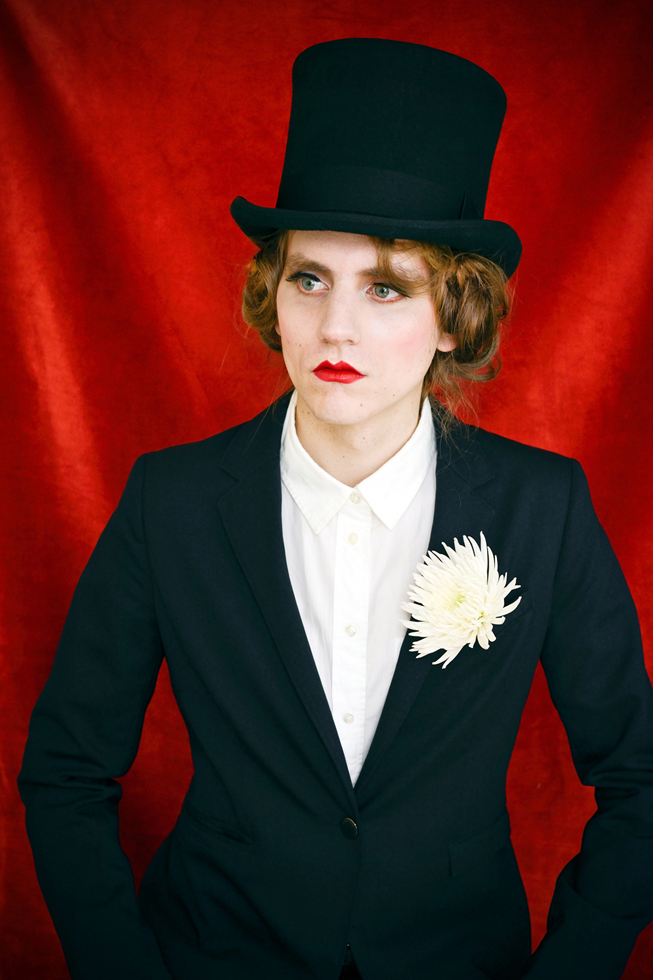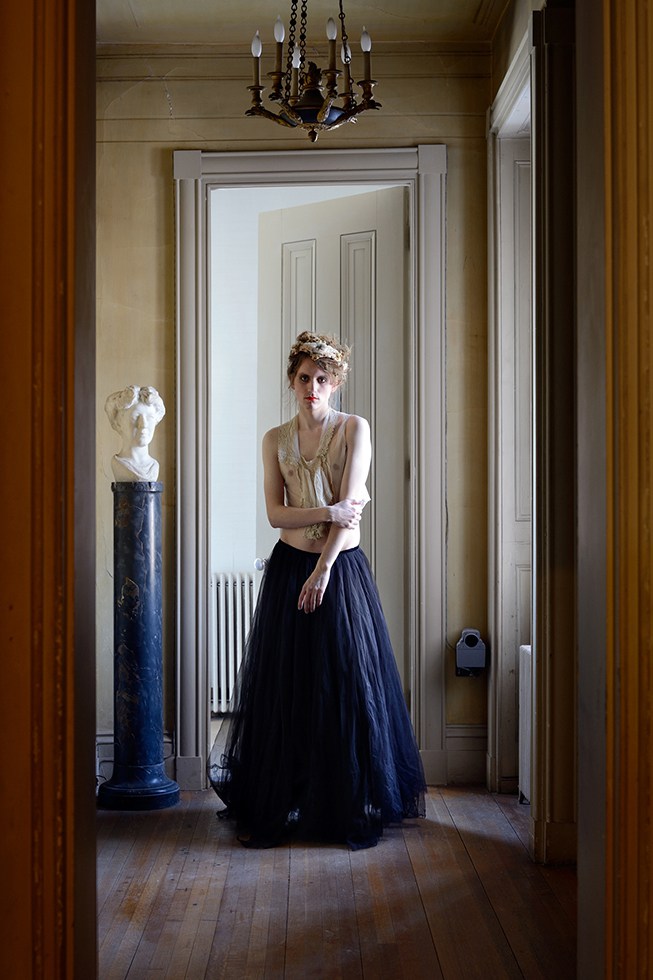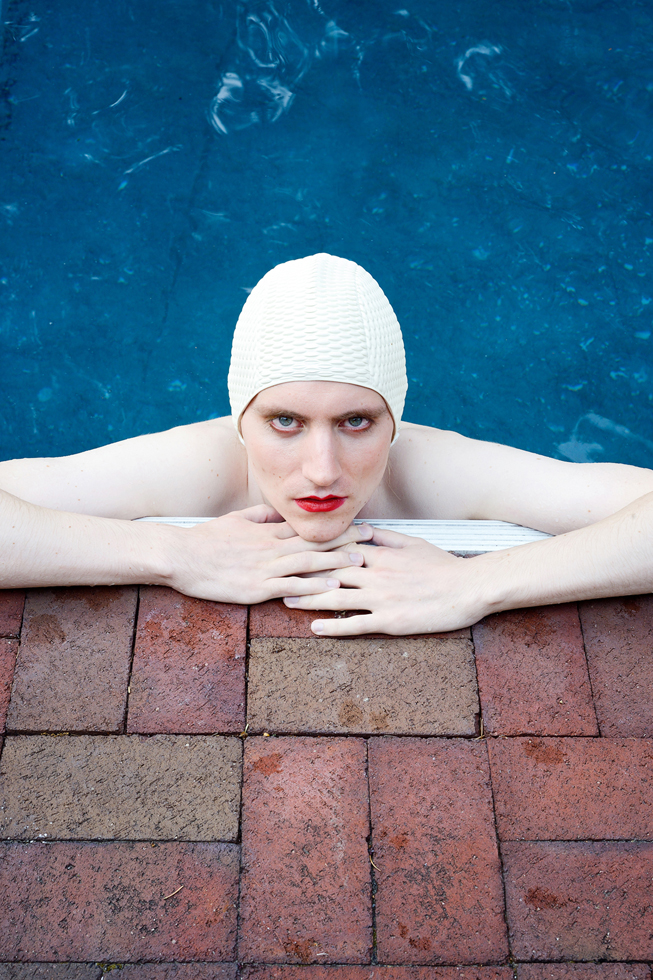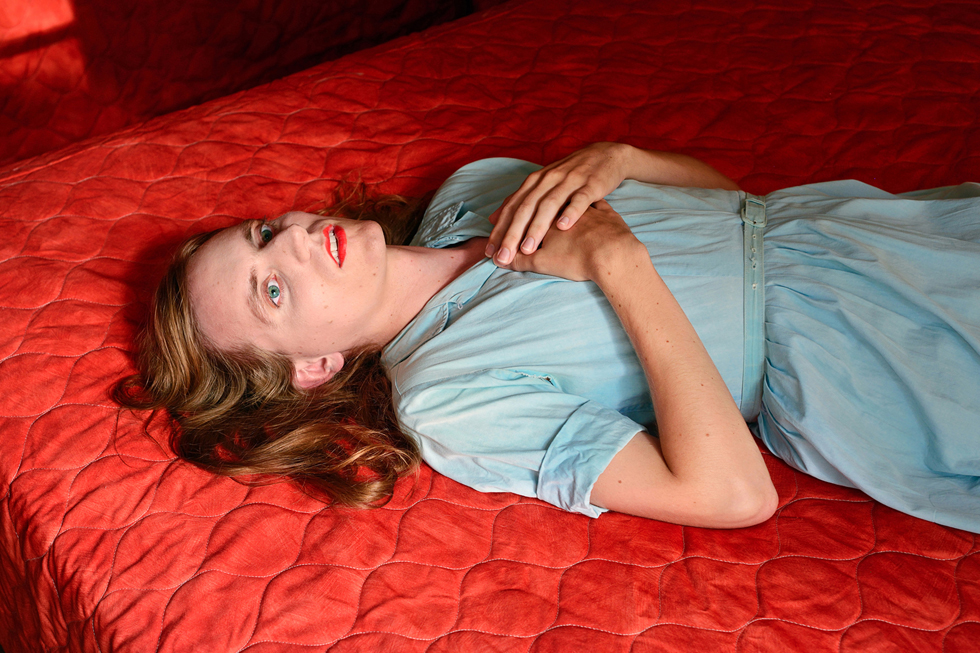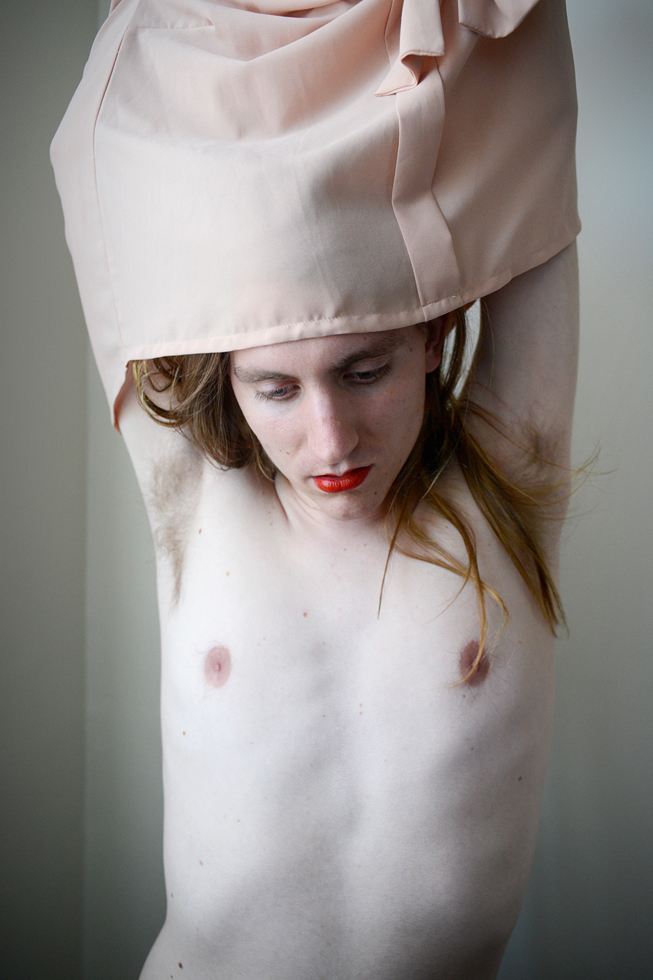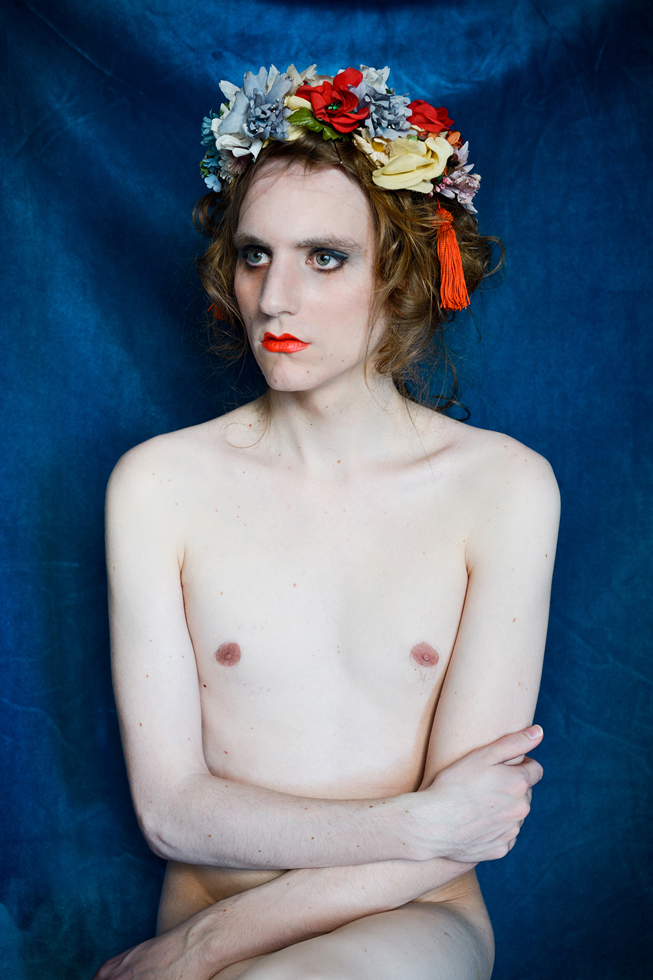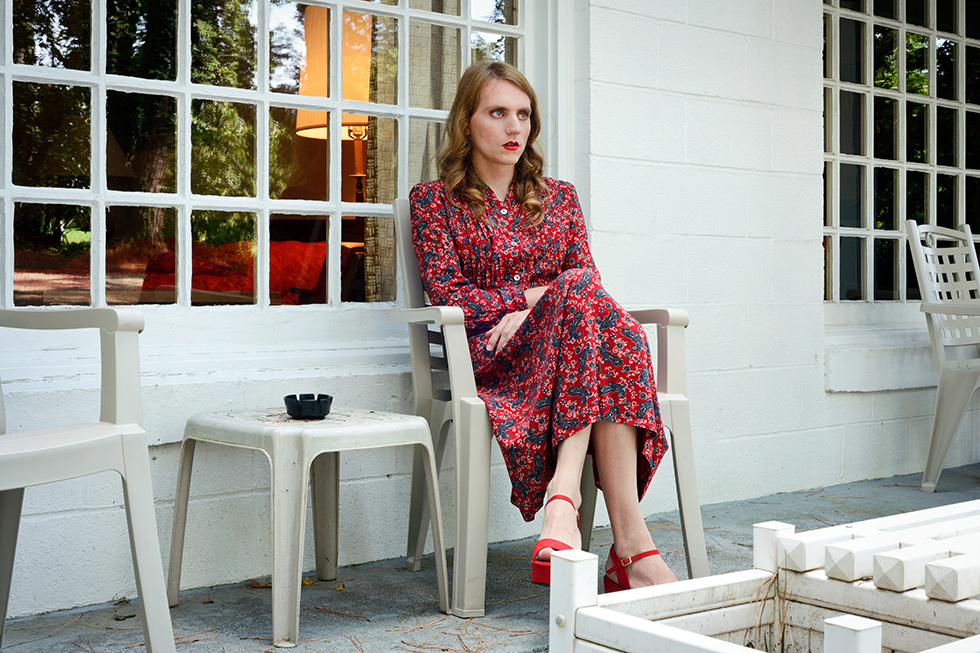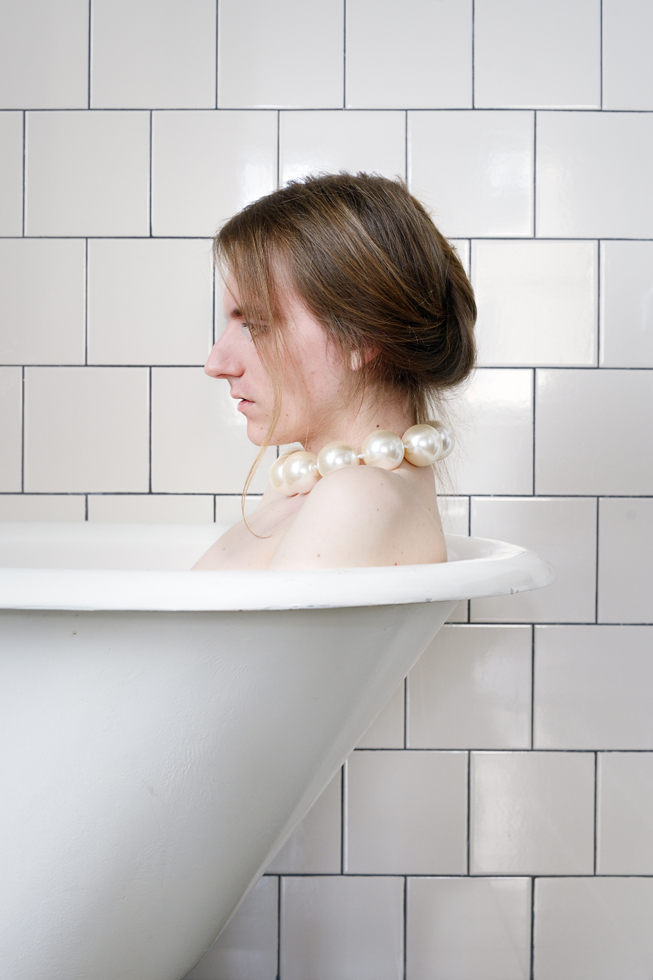Q&A: Lissa Rivera
By Hamidah Glasgow | February 23, 2017
‘Beautiful Boy’ is an ongoing project that began as a confession between two friends. On the subway one evening, my friend shared that he had worn women’s clothing almost exclusively in college, but after graduation struggled to navigate a world that seemed both newly accepting and yet inherently reviling of male displays of femininity. I thought that photography could provide a space for him to experiment with his identity outside of isolation. Taking the first pictures was an emotional experience. I connected with my friend’s vulnerability. I wanted to make sure that the images were not a compromise for either of us, and we engaged in many discussions. Both of us have long, fraught relationships with femininity that have fundamentally shaped who we are. Our desires were matched. They had the desire to see themselves and I felt driven to capture their exploration. A part of my own identity that had defied expression also began to emerge. As time went on, we realized that we had unexpectedly fallen in love. He became my romantic partner and collaborator. I wanted to make images without shame, to show his femininity as strength. I wanted to feel empowered as well, to have an intimate muse. When taking the photos I felt the same as when viewing a film where a director and actress share a deep connection to the fantasy captured. Although our emotional relationship is private and real, we perform a romanticism that is obsessive
and decadent. We connect to images, films and records of women that we idolize and consume together. Collaging the visual language of the past, I tap into deep-seated narratives about gender, desire, freedom, and cultural taboo. The fantasy of dressing up transforms the act of being photographed into one that fuses identity creation with image creation. The camera transposes our private experiences into public expression.
_Lissa Rivera
HG: I'm intrigued by the last two sentences of your artist statement,"The fantasy of dressing up transforms the act of being photographed into one that fuses identity creation with image creation. The camera transposes our private experiences into public expression." Tell me about what the “fantasy of dressing up,” means to both you and your partner? How does it differ and how is it similar?
LR: To me, the fantasy of dressing up refers to the transporting effect of fashion. Fashion can read as a series of codes—a form of communication signaling sexual orientation, class, and even moral or political leanings. Fashion can be aspirational or modest. It can reflect beliefs and values. To wear an item of clothing from another period can be a kind of time travel. In fashion and cinema femininity is often linked to fantasy and surrealism. This might be a result of the consumption of femininity being linked to the home. As the middle class developed, women whose terrain was the home could connect to images in magazines and films that could transport their minds into another realm. In many folk and fairy tales, women are able to transcend class and oppression through fashion, which would get them noticed by their rescuer. Femininity and fashion are intimately linked in these narratives.
A driving force in our work is the spark of desire provoked by a well-produced depiction of femininity. I do not strive for perfection in relation to cultural norms. Instead, I strive to touch the images that interest and move us. It is much like Alice in Wonderland and the looking glass. It is the desire to be inside of an image that we find personally potent. My partner BJ is a historian, and I have worked in collections and museums for many years as a day job. I think we both love exploring old images and play-acting them out as a kind of experiential learning.
BJ: The power of clothing and presentation to make and remake gender is incredible. Existing in a space between genders, clothing takes on even more power. The power to send you rocketing down one side of the gender spectrum or the other. In my personal life, I use this power to move around the gender spectrum, searching for the place where I am most comfortable—not in life, or forever, but in the moment, right now. In the work, we explore this process. The lines between fantasy and reality, longing, and consummation, visualization and actualization are the terrains in which we explore the intersecting lines of male and female, past and present. We do this in our work, but also in our everyday lives. The two are synergistic.
HG: Clothing obviously plays a fundamental role in the images you create together. How would gender identity or gender fluidity appear in your work if articles of clothing were not part of the creation? I ask this because our identity is only partly made up with the “drag” that we choose to wear on a daily basis. Without the markers for where someone fits in there is a whole different space to explore.
LR: I can see where you are coming from with this question. Although I do explore various states of undress in the project, as an artist I have always been drawn to investigations of material culture. As much as I am interested in capturing BJ’s gender fluidity, I am also interested in dissecting a visual language that has greatly affected culture. The visual language of advertising, fashion and cinema is a powerful tool. Many of my interests stem from surrealism, and I strive to create images that have both potency and tension, advertising and fashion owe a lot to the surrealists. Surrealism in many ways is a study of symbolism, the mysticism of cultural icons, as well as the erotic drive. One of the most powerful ways to be free is to realize that everything is a construct. In this sense, I am building a world with BJ, creating a biography within an imaginary space.
BJ: I think that by stripping away clothing in layers, and in some photos leaving clothes behind entirely, we have tried to explore this question aesthetically. As for personally, I just can’t separate it out. I can’t imagine my gender identity as something outside of my place in society, in culture, in community, and in relationships. Without markers of identity, what is left? I’m not sure if it is possible to know. Naked and alone in the shower, with my eyes closed—even then, I am surrounded by objects, shampoo bottles, razors, towels, with tremendous symbolic meaning.
HG: On a similar theme, is identity created, found or somewhere in-between?
LR: BJ and I as museum professionals have both encountered images of mysterious origin. By this, I mean images from the past that are discovered without documentation. This can be a single image in an archive where the identity of the person is unknown. What can you assert about this individual’s story based on the information in the photograph? What they are wearing, the time and the place all seem to hold great importance, yet this is just a fragment of that person’s life. And then there are photographs of individuals, Rimbaud, for example, whose lives have been written about extensively, yet there are very few known photographs of them. Their identity becomes quite attached to an image that it is in a way entirely random. Photography has a complex relationship to identity construction. Now that we are in a digital age, it is possible to trace the ways that identity and image-making are intertwined. You can literally watch someone transition on youtube—many individuals diligently document their weight loss, plastic surgery, or exploration of beauty techniques as they create their idealized image. But that idealized image is not stable. It is constantly transforming in reaction to one’s personal relationships and the desires that they produce.
A photograph is a collaboration between the subject and the photographer. The two are engaged in a battle of desire—the desire of the subject to communicate a message about themselves and of the photographer to communicate something about how they see that person, and often something about themselves as well. The sitter chooses how much they give to the camera, their stance, and level of vulnerability. The photographer chooses the direction of light, the angle, and the distance from the subject, which can alter the depiction of the subject’s identity quite drastically. In our work, we explore the futility of desire and identity based upon this exchange. The only stable identity that is created is that of the 1/8 of a second when the image is recorded.
HG: How does your collaboration work?
LR: The process begins with an initial phase where BJ and I watch a series of films or view collections of images (often found in historical archives). We begin to discuss our feelings about the materials afterward and I continue the research. Independently, I spend days researching locations, creating set designs, collecting costumes, studying hair and makeup techniques and sketching out the shoots beforehand, and then BJ and I go over them together. We live together and are a very close-knit couple, so we are constantly talking about gender, art, and our desires and interests. Of course, BJ has his own very busy career as a historian and personal projects, including writing and music.
LR: This project has been a collaboration from the beginning. Although I art-direct the images and come to each shoot with a strong aesthetic intention, BJ inhabits each costume and set in a thoughtful way, embodying the scenario with a sense of openness. It is rare to work with someone so willing to allow for transformation into an unknown space. In the end, we are often surprised by the images. BJ is dedicated to the role of the muse, which is much rarer than that of the artist. It is a kind of zen-like lifting of the ego that in my eye makes BJ my spiritual guide. In the end, our fantasies are both realized and heightened with every shoot. It is also an ego-building experience, as so much of what we do is celebrating beauty. Too often, women have been taught that enjoying their own body is inappropriate.
Relationships like this are rare. One example that has inspired us is the relationship between Emmet and Edith Gowin, who collaborated on a romantic and intimate artist-muse relationship. You can sense the excitement behind the creation of each of their images. In one interview Edith describes a photograph where she decided to expose her breasts to the camera despite her family’s presence in the background, watching a sports game. This is still considered an Emmet Gowin photograph, despite Edith’s significant action. Her intention was based on her realization that she and Emmet inhabited a very separate world together as a couple within a larger family unit.
In ‘Beautiful Boy,’ BJ and I have constructed an elaborate and private world that becomes public with the sharing of the images. Great muses can give voice to the most creative period in an artist’s lifetime and therefore should receive the utmost honor. It is just unusual for a female artist to be in the opposite position. I feel very lucky.
HG: Within this artist and muse relationship will both your names associated with the work at some point in the future or will your name always be the singular author?
LR: I am the author of the images, as they come from my visions. BJ’s contribution is acknowledged as my subject. My acknowledgment of my muse as collaborator is just less common. I check in with BJ all the time about his feelings in regards to his credit.
BJ: It depends on what you mean by author. Lissa and I collaborate as artist/muse or artist/model. They are, in some fundamental way, Lissa’s photographs of me. But, within this relationship of photographer/artist to model/muse, we do not believe that the artist’s contribution comes first or is more important. What I contribute as a subject is as important as what she contributes as a photographer.I don’t want my name on the photos because I didn’t take them!
HG: Fair enough.
HG: So many of the images that you’ve created have this beautiful balance of feminine and masculine that I find gives me hope for a more balanced future in a non-binary world. Maybe that is too optimistic as people are slow to change. How have you experienced the expanse that is possible beyond the binary?
LR: Being in a non-binary relationship is so freeing. The idea of being in a traditional relationship and having to live up to the cultural expectations of my gender seems so imprisoning. Once you have left that prison, you can’t imagine going back. It is exciting to transcend gender norms and to have a partner that is not frustrated by unconventional viewpoints. We can focus on loving and accepting each other not as a failed man or woman, but as something beyond, and help each other feel more honest in our expression. BJ loves to help with the project and views my fulfillment as an artist as an investment in our relationship. He loves the idea of exploring the role of the muse and does not view it as weaker or lesser. I enjoy celebrating BJ’s beauty. Our work is not all lighthearted, though. We explore both the strength and ambivalence of the feminine image.
This project has also allowed me to mature in the way I see myself. I look back at photographs where I felt unattractive and see a beautiful, intelligent person who did not deserve the kind of criticism that I had been mirroring towards myself from a constrictive gender culture.
HG: Tell me a little about the trajectory of the image making? Where do you go from here? Will you ever photograph the two of you together?
LR: I do photograph the two of us together, but for now we are keeping those images between the two of us. I feel like I am laying myself bare with the images even when I am not in them. We keep shooting, and everything is getting more elaborate and cinematic. There is enough unreleased material for two projects. I think I am going to organize these images into chapters.
HG: What’s next for you?
BJ: A show! Then we will see.
LR: Yes! My first show at ClampArt. I am beginning to work on layouts for the installation. I am very excited, as I have been a big fan of ClampArt for years! I just love that I will be showing at a gallery that represents artists that inspire me, including Peter Berlin and James Bidgood. Brian Clamp’s interest and knowledge of art dealing with gender and sexuality are encyclopedic. I am a total nerd for vintage prints, and he has a fantastic inventory—there is always some goodie on the wall back in the viewing area of the gallery.
HG: Congratulations on the show at ClampArt. Perhaps, I will see you both there.
